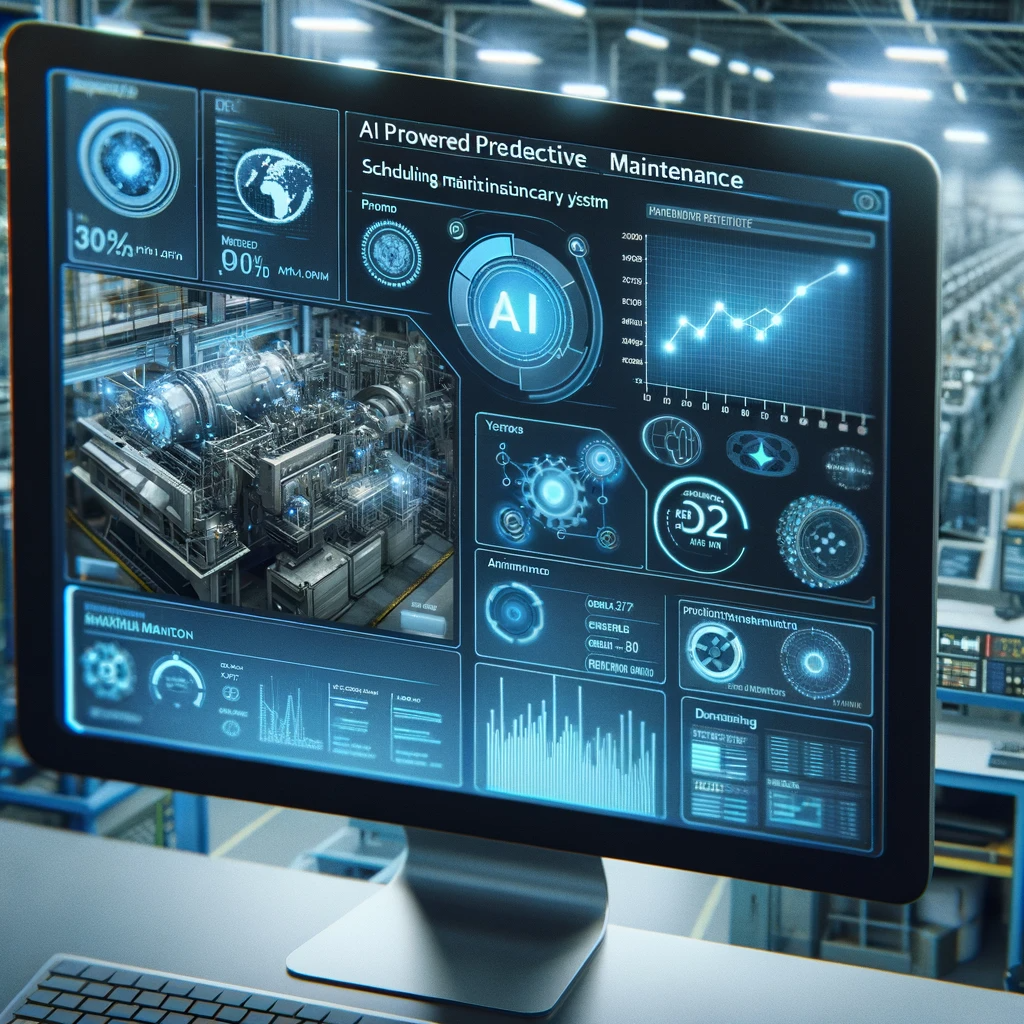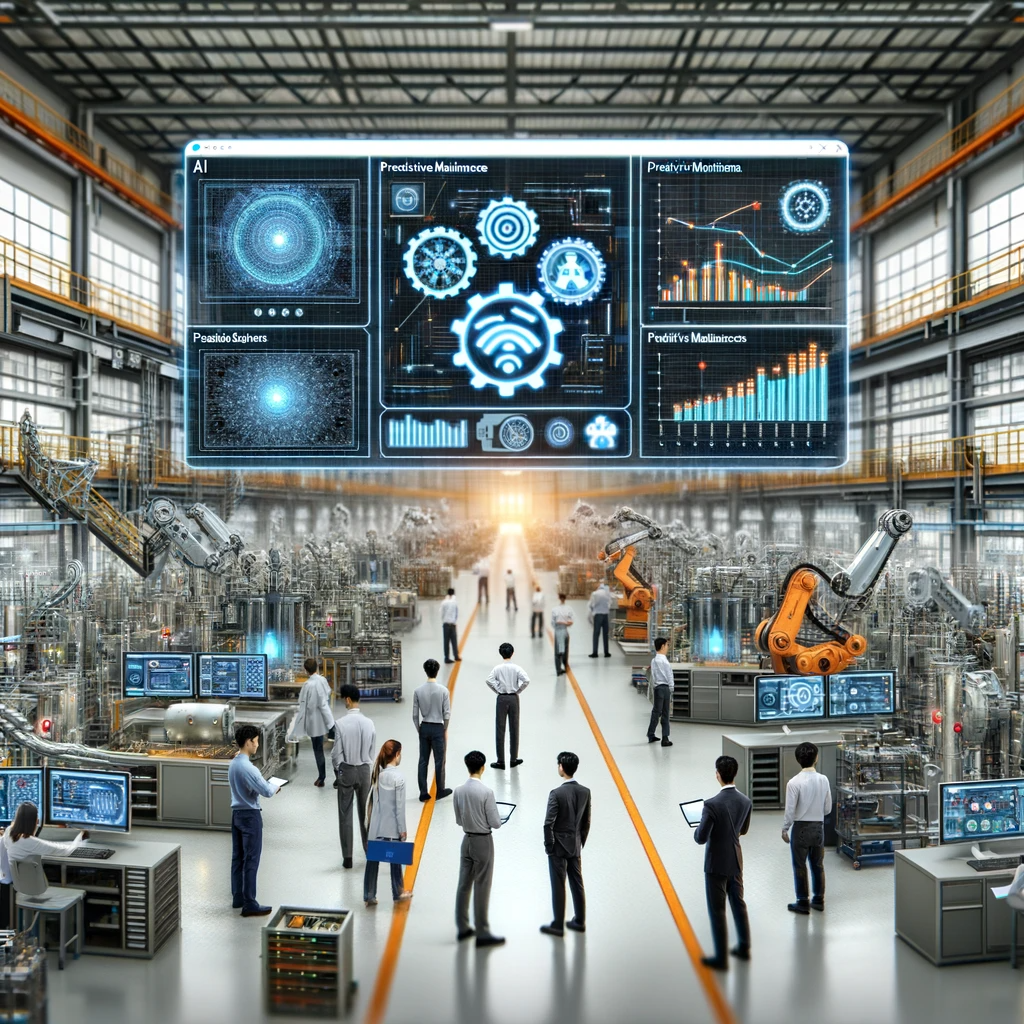The heartbeat of any manufacturing operation is the relentless hum of machines and equipment, each contributing its part to the symphony of production. In this fast-paced world of manufacturing, where every second counts, the maintenance of these machines is not just a necessity but a critical factor that can make or break an entire operation.
Manufacturing, with its complex machinery and intricate processes, relies heavily on maintenance to ensure that production runs smoothly, costs are kept in check, and equipment downtime is minimized. Traditional maintenance methods, however, have their limitations, often leading to unexpected breakdowns, production delays, and unnecessary expenses.
This article delves into a groundbreaking technological shift that is revolutionizing maintenance in the manufacturing sector—AI-powered predictive maintenance. As we explore the possibilities and potential of this transformative approach, it becomes clear that the future of manufacturing is intricately tied to the capabilities of artificial intelligence in predicting and preventing equipment failures. In this article, we will journey through the world of manufacturing, uncovering how AI is poised to redefine the way we approach maintenance, and why it may very well be the future of this critical industry.
The Vital Role of Maintenance in Manufacturing
In the bustling world of manufacturing, where precision and efficiency are paramount, maintenance stands as a cornerstone. It’s the unsung hero that keeps the assembly lines flowing, ensuring machines and equipment operate at their optimal best. The importance of maintenance in manufacturing cannot be overstated.
Importance of Maintenance: At the heart of manufacturing’s success lies maintenance. It’s the guardian of production efficiency, cost control, and equipment reliability. Neglecting maintenance can lead to a cascade of problems, including costly breakdowns and unscheduled downtime that can disrupt production schedules.
Challenges in Traditional Maintenance: While maintenance is essential, traditional approaches often fall short. Reactive maintenance, where repairs occur only after a breakdown, can lead to costly downtime and unexpected expenses. Scheduled maintenance, on the other hand, can be inefficient, resulting in unnecessary service or component replacement.
What is Predictive Maintenance?
Predictive maintenance emerges as a beacon of hope, promising a more proactive and data-driven approach to keeping manufacturing operations running smoothly.
Definition: Predictive maintenance is not just a concept; it’s a strategic approach that relies on data and technology to anticipate when equipment failures might occur. It’s about addressing issues before they become critical.
How Predictive Maintenance Works: This approach harnesses the power of data collection, analysis, and condition monitoring. Sensors and advanced analytics continuously assess the health of equipment, providing insights into their operational status.
Benefits of Predictive Maintenance: The advantages of predictive maintenance are manifold. It’s not just about avoiding costly breakdowns; it’s about optimizing equipment lifespan, reducing maintenance costs, and improving overall operational efficiency.
The Role of AI in Predictive Maintenance

The driving force behind the predictive maintenance revolution is Artificial Intelligence (AI), a technological marvel that is redefining how we approach manufacturing.
AI Overview: Artificial Intelligence, or AI, is a multidisciplinary field of computer science that aims to create intelligent machines capable of learning and making decisions. Its applicability extends across various industries, and manufacturing is no exception.
AI in Manufacturing: AI’s entry into manufacturing represents a paradigm shift. It’s the key to unlocking a new era of efficiency and reliability, particularly in predictive maintenance.
Machine Learning in Predictive Maintenance: Machine learning algorithms, a subset of AI, are the brains behind predictive maintenance. These algorithms analyze data patterns to predict when equipment is likely to fail, allowing for timely intervention.
In the following sections, we’ll explore how AI-powered predictive maintenance operates in practice, the benefits it offers, and its potential to shape the future of manufacturing. We’ll uncover how AI-driven data collection, early fault detection, and optimized maintenance schedules can revolutionize the manufacturing landscape.
AI-Powered Predictive Maintenance in Action
In the heart of manufacturing plants worldwide, AI-powered predictive maintenance is silently revolutionizing the way machines are cared for and managed.
Data Collection: At the core of AI-powered predictive maintenance is an extensive network of sensors and data collection devices. These sensors monitor every aspect of machine operation, from temperature and vibration to power consumption and fluid levels. The data generated is immense, providing a comprehensive view of equipment health.
Early Fault Detection: What sets AI apart is its ability to detect potential issues before they escalate into costly breakdowns. AI algorithms continuously analyze the data stream, looking for anomalies or deviations from expected patterns. When an irregularity is detected, maintenance teams are alerted, allowing them to intervene before a failure occurs.
Optimizing Maintenance Schedules: AI doesn’t just predict when maintenance is needed; it optimizes the timing. Rather than relying on rigid schedules or waiting for breakdowns, AI ensures that maintenance activities align with equipment conditions. This minimizes downtime and maximizes operational efficiency.
Benefits and Future Prospects
The impact of AI-powered predictive maintenance reverberates throughout manufacturing, offering a host of benefits and promising an even more transformative future.
Cost Savings: The financial implications of AI-driven maintenance are profound. By preventing breakdowns and optimizing maintenance schedules, manufacturers can save millions in repair costs and reduced downtime.
Enhanced Efficiency: Predictive maintenance enhances overall production efficiency. Machines operate at their peak, reducing energy consumption and waste. Unplanned downtime becomes a thing of the past, and production schedules are met consistently.
Sustainability: Beyond financial gains, predictive maintenance contributes to sustainability efforts. By ensuring machines operate efficiently and avoid premature replacement, AI helps reduce waste and energy consumption, aligning manufacturing with eco-conscious practices.
The Future of Manufacturing: As we peer into the future, the integration of AI into manufacturing processes promises an exciting evolution. Predictive maintenance is just the tip of the iceberg. In the era of Industry 4.0 and smart manufacturing, AI will play a central role in optimizing production, supply chains, and quality control.

Conclusion
In the grand tapestry of manufacturing, maintenance is the unseen thread that weaves the fabric of efficiency and reliability. With AI-powered predictive maintenance, that thread is becoming stronger and more dynamic than ever before. As machines become smarter and maintenance becomes proactive, the future of manufacturing looks brighter and more sustainable.
In this article, we’ve ventured into the world of manufacturing, exploring how AI’s predictive prowess is poised to reshape the industry. It’s not merely a technological innovation; it’s a paradigm shift that promises cost savings, enhanced efficiency, and a more sustainable future.
As we embrace the future, it’s clear that AI-powered predictive maintenance is not just a passing trend; it’s a fundamental transformation of how we keep the wheels of manufacturing turning. In the heart of every factory, AI is quietly proving that it’s not just the future; it’s the now of manufacturing maintenance.
